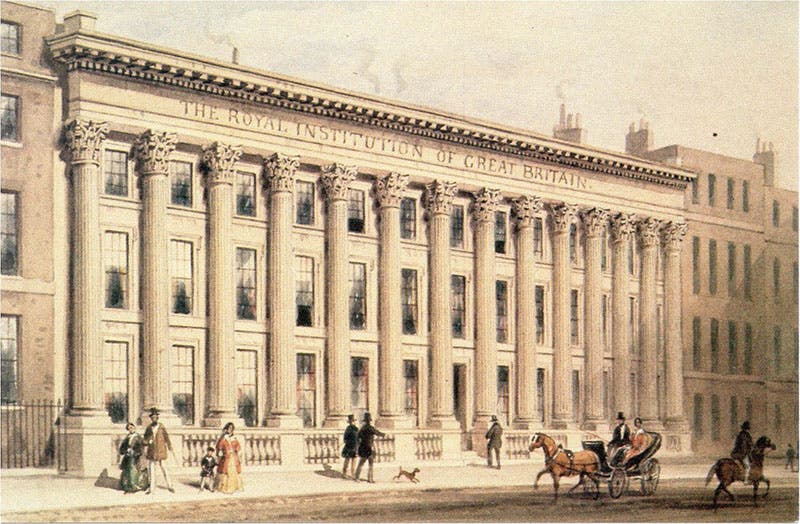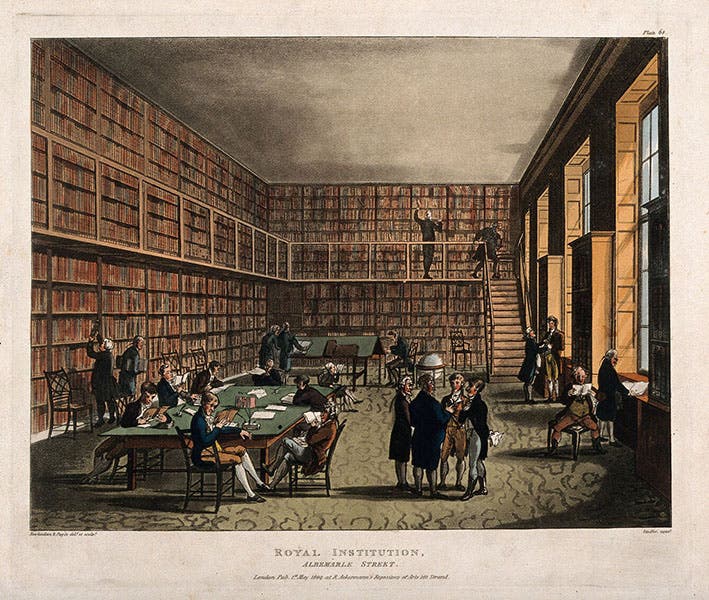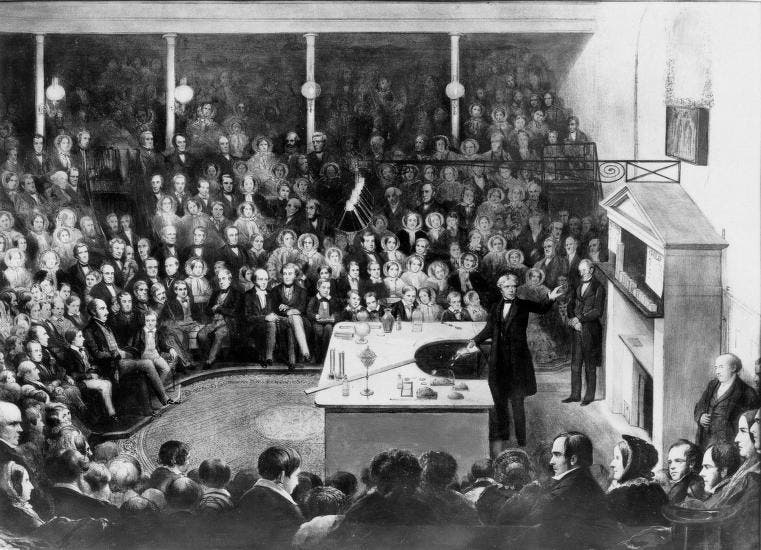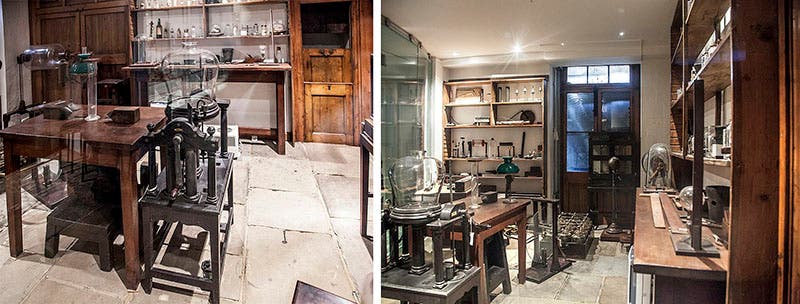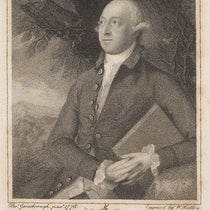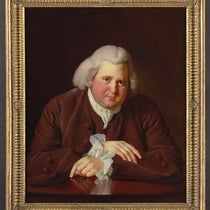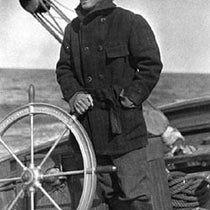Scientist of the Day - Royal Institution of Great Britain
The Royal Institution of Great Britain (usually called the RI) was founded Mar. 7, 1799, at the home of Sir Joseph Banks, the President of the Royal Society. The Institution was the brainchild of Benjamin Thompson, a former American who was revolutionizing the study of heat and who had instituted a social revolution in Munich by reforming the diet and dress of the Bavarian army, earning himself the title, Count Rumford (second image). Thompson returned to London in 1798 and immediately wrote up a proposal for an institution for the "diffusion of knowledge," i.e., bringing science to the people.by giving lectures and demonstrations at no charge. He talked with Banks about it; Banks liked the idea, and convened the meeting, at which 60 gentlemen agreed to subscribe to found such an institution. Within four months, the group purchased a stately building at 21 Albemarle Street and immediately began adapting it for public lectures, building in a large lecture hall whose seats radiated outward and upward from a central lecture platform, as well as turning a reception room into a library and building laboratories. It received a charter from the king in 1800 and hence became the Royal Institution. Thomas Garnett was chosen as the first lecturer, and he was at work before the year was out. His lectures were apparently well organized and well received.
However, Banks and the rest of the oversight committee, which included Thompson and Henry Cavendish, were for some reason not happy with Garnet, or perhaps they were just smitten with young Humphry Davy, who was then beginning his career at the Pneumatic Institute in Bristol (fourth image). He was hired on board as an assistant lecturer in 1801, without consulting Garnett. Garnett resigned (and unfortunately died the next year), and Davy succeeded him as professor and lecturer in natural philosophy, and laboratory director. Davy was apparently a brilliant speaker, wowing his audiences with demonstrations of sparking Leyden jars and flaming hydrogen. The battery had been invented by Volta, just a year before Davy began lecturing, and soon the RI had a basement full of batteries to power the experiments being performed on the floor above. Gases such as hydrogen and nitrous oxide (laughing gas) were not quite so new, but they were new enough that few of the public had seen them in action. There are two more portraits of Davy, and an engraving of him lecturing, at our post on Davy.
Thanks largely to Davy, the RI also blossomed into a research institution. Davy lived on the premises, and had a large laboratory for his professional use, and, beginning in 1807, he started to use the new technique of electrolysis to discover new elements (we explain electrolysis more fully in our post on Davy). In 1807, Davy broke down a salt and discovered potassium, and then, in short order, he isolated sodium, barium, boron, calcium, magnesium, and chlorine. Never before, and never again, would a single individual isolate so many new elements in so short a time, just a few years.
Shortly thereafter, Davy made another important discovery, this time not an element, but a person: Michael Faraday. Faraday was a self-educated bookbinder’s apprentice when he attended some of Davy's RI lectures in 1812. He wrote up and illustrated his notes and sent them to Davy, who was so impressed that he made Faraday his assistant in 1813. When Davy died in 1829, Faraday took over as lecturer and laboratory director, and he was an even more brilliant performer than Davy and filled the lecture hall regularly. Faraday also inaugurated the Christmas Lectures in 1825, an annual holiday series that is still a tradition at the Royal Institution, aimed toward a younger audience. One of the best-known images of Faraday shows him delivering a Christmas lecture on electricity to an audience of primarily women and children at the RI in 1855 (fifth image). There is a portrait of Faraday in our post on Faraday.
The Royal Institution is still going strong today, having weathered a few financial crises caused by some questionable management decisions. And for some reason, they insist on calling themselves the Ri, with a lower case “i”, which seems to us Americans like an affectation, but then, it is not our institution. However, the Christmas lectures continue, broadcast nationally, and it is considered a great honor to be chosen to deliver one or a set of such lectures. We hope that tradition long continues.
The RI has also opened a Faraday Museum within the premises, where you can see Faraday’s laboratory as it was in the 1850s (seventh image). They stress that this is not a reconstruction but the actual Faraday laboratory, refurbished, but otherwise original. It certainly seems worth a visit from any fan of 19th-century experimental science.
William B. Ashworth, Jr., Consultant for the History of Science, Linda Hall Library and Associate Professor emeritus, Department of History, University of Missouri-Kansas City. Comments or corrections are welcome; please direct to ashworthw@umkc.edu.


